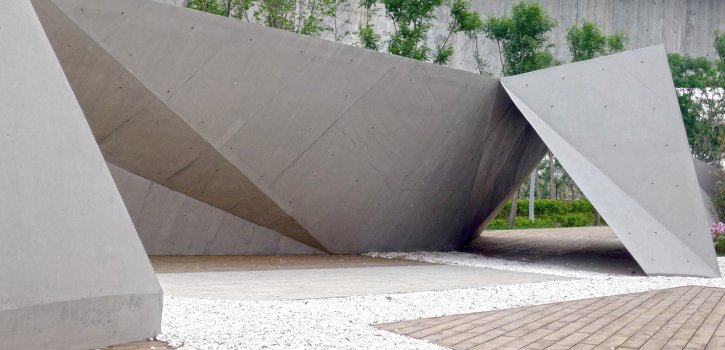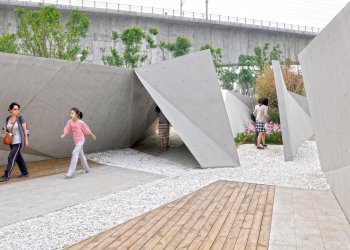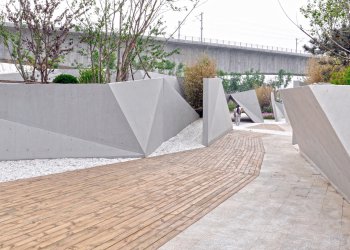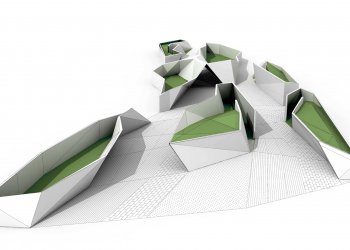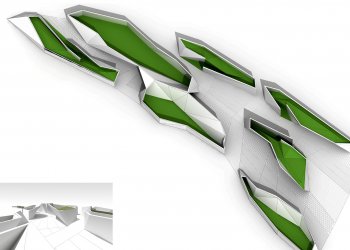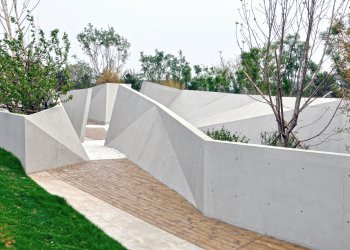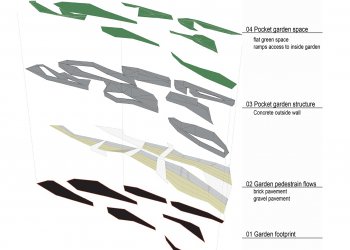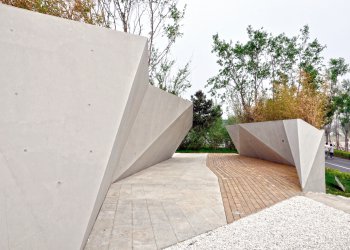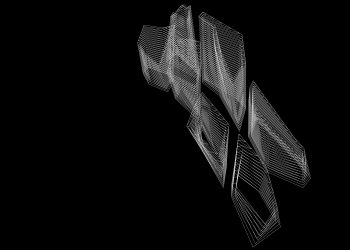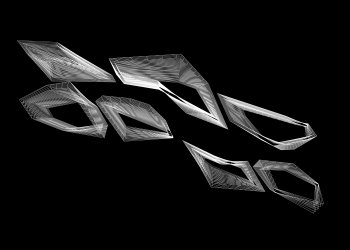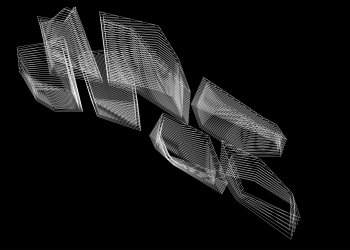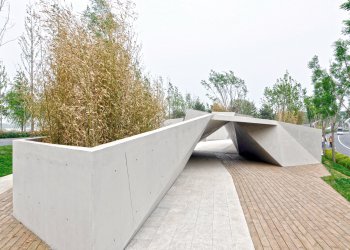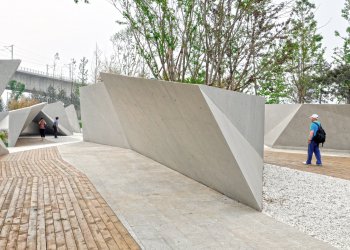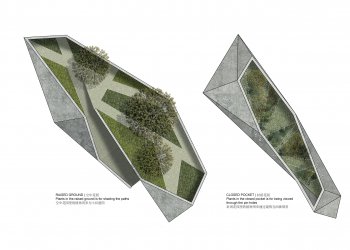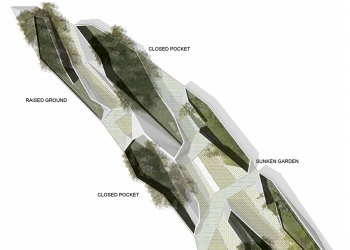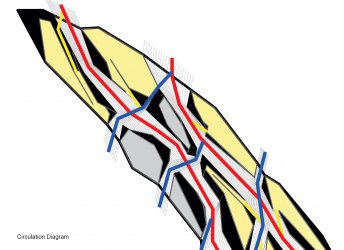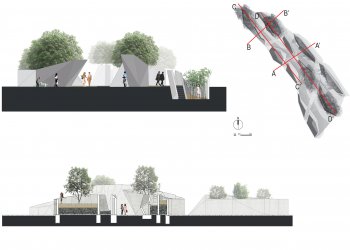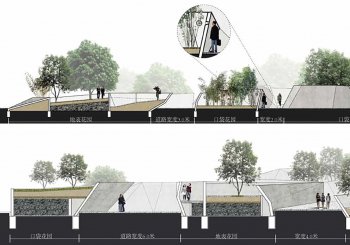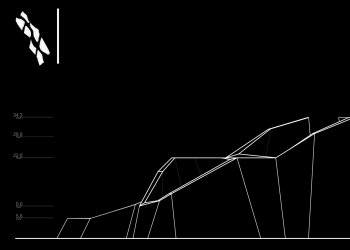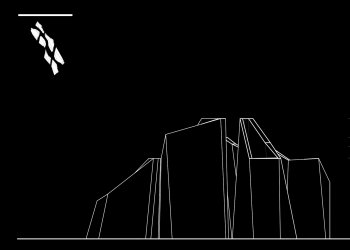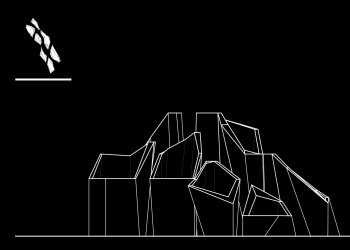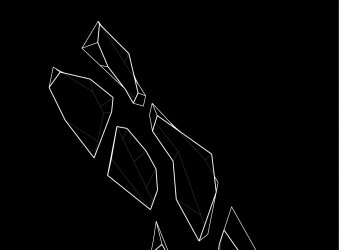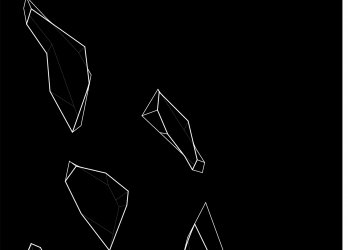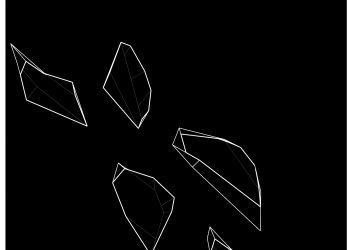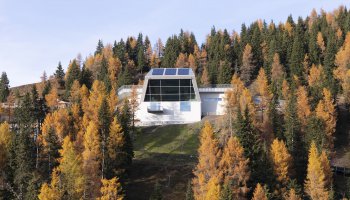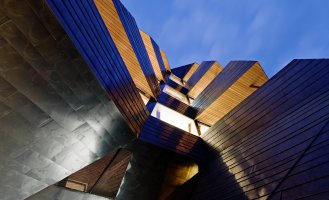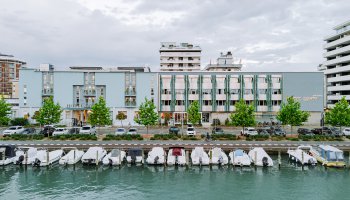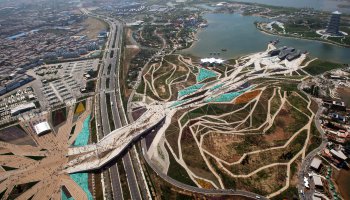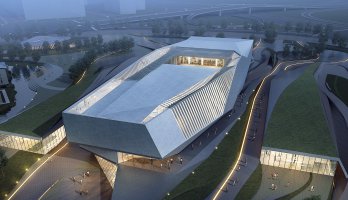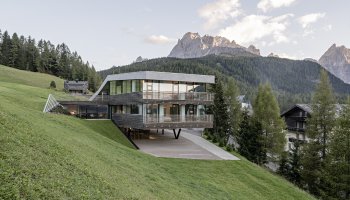Sunken ground looks at concepts present in Suzhou gardens tradition, such as the rock, the outcrop and the occidental equivalent of the grotto, to then travel in space and time to the image of hanging gardens and further on to the concept of a sunken courtyard.
The result is a combination of both intense distortions of the ground and an acute sense of three-dimensionality, where one feels draped by concrete, steel and vegetation, free to explore a thickened version of a microcosm in a series of pocket landscapes for reflection, relaxation and ultimate playfulness.
The first idea is that of the canyon, as a compressed landscape into the space of a corridor. Natural canyons both have the intense spatial quality of the enclosed space, but also inherit the layered characteristics of the geological formation, showing strata, cracks and faults of the matrix rock.
This feeling of thickness and sculpting is being used to explore how architectural elements can fabricate a passage where material, shade and enclosure would dictate the main spatial experience. The containers serve as meandering elements within the garden landscape. The project offers a diverse experience, with the levels within the volumes designed in a way that visitors can experience the three-dimensionality of the park: by climbing to the top of a volume, by observing other volumes, and by observing the flow of people. Finally, paving and decking patterns, as well as pebble surfaces, extend across the entire site, giving the park continuity and harmony.
